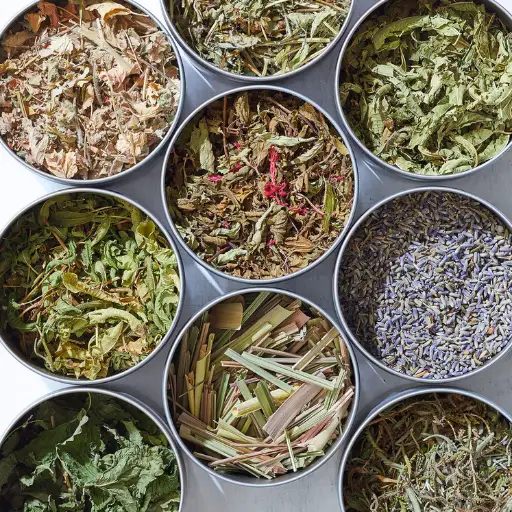Herbs can be dried to preserve their flavor and fragrance, allowing you to enjoy your garden’s bounty long after the growing season has ended. This guide presents a fast and easy method for drying herbs in the microwave, saving time while keeping fresh herbs’ lively flavors intact. Anyone who loves cooking or is just starting in the kitchen can easily use this method. From herb selection to drying mastery, all essential tips are provided here to dry your favorite herbs best and enhance your culinary creations.
Why Use a Microwave to Dry Herbs?
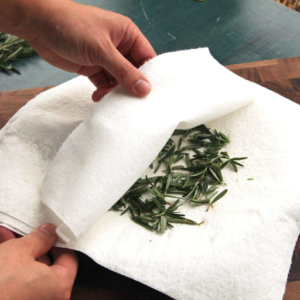
Image source: https://www.seriouseats.com/
Many home cooks choose microwaving as their preferred way of drying because there are benefits involved with doing so. First, compared to other methods like air-drying or an oven, which may take hours, the microwave drastically cuts down on duration until ready-to-use dried herbs become available. We’re talking minutes. Not only does this speediness appeal, but during those few moments, vibrant colors remain visible, and essential oils are preserved, resulting in potent-tasting seasonings later on when added to dishes! Plus, energy efficiency is another bonus since less power will be used than if one turns on an oven or dehydrator; quickly preserving high-quality, flavorful goods becomes even more achievable!
Benefits of Microwaving Fresh Herbs
When it comes to drying herbs, microwaving them can speed up the process and improve flavor retention.
- Speed: Microwaving’s biggest advantage is its quick drying time. It’s perfect for people who need herbs quickly because it can dry them in a matter of minutes, compared to air drying or using an oven, which takes hours.
- Flavor Retention: The microwave method helps retain the essential oils and bright colors of the herbs, making them more fragrant and tasty. This means that dried herbs will have a similar flavor to fresh ones.
- Convenience: Microwaving only requires a few tools and a minor cleanup afterward. You don’t need any special equipment to dry small amounts of herbs, which makes it easy for anyone to do it in their kitchen.
- Energy Efficiency: Since using a microwave usually takes less energy than running an oven or dehydrator for hours, this method cuts down on energy bills while still providing high-quality dried herbs.
Use this microwave technique when cooking to use your full-flavored dried seasonings all year round!
Comparison to Other Methods: Dehydrator vs. Microwave
Many comparisons can be made involving efficiency between dehydrators vs microwaves based on effectiveness, time taken, and quality obtained:
- Drying Time: Dehydrators take several hours, but microwaving dries them within minutes. This is very significant for those who want fast results with their spices.
- Quality Of Herbs: Both options aim at maintaining taste; however, because there’s shorter exposure to heat in the microwave, it better preserves essential oils. Gentle as they may be over long periods, though dehydrators may lose some power
- Energy Use: When doing small amounts, a microwave uses less electricity than the extended use of a dehydrating machine; however, when dealing with larger quantities then, one should opt for the latter instead
To conclude, if you are short on time or want something that saves energy, consider microwaving as a viable option that provides quickness and high quality compared to other methods, such as bulk drying, where monitoring has been done frequently since it takes longer but still works well.
Common Herbs to Dry in a Microwave
Several popular herbs are great when it comes to microwave drying. They include:
- Basil: It is aromatic and sweet, so it dries fast in the microwave, making it a favorite for deepening flavor in different dishes.
- Oregano: This herb has a strong and earthy flavor, which means that even after being dried using microwaves, its taste will still be intact. Thus, it is perfect for Italian cuisine.
- Thyme: Thyme’s subtle minty taste works well with microwaves, which allows easy addition of this herb to soups, stews, and marinades.
These herbs can be quickly dried while still retaining their smell and flavor using a microwave oven.
What Are the Best Fresh Herbs in the Microwave?
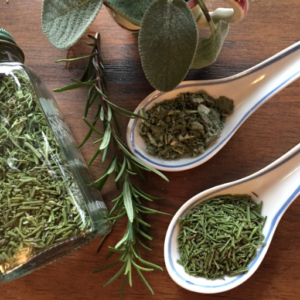
Some varieties excel when looking for fresh herbs that do best when dried in the microwave due to their moisture content and flavors. Below are some of them:
- Parsley: It is an all-purpose seasoning that drys quickly while maintaining its bright flavor, thus adding value to various dishes and garnishes.
- Cilantro: This unique-tasting plant can be heated in a microwave to keep its identity, making it suitable for salsas or any other Mexican dish.
- Mint: Mint dries rapidly yet retains most of its aromatic quality, making it ideal for teas, desserts, and other culinary uses.
-
Sage: Strongly flavored sage benefits from heating up in microwaves, thereby ensuring that the original strong taste remains constant; it is especially suitable for spicing meats during cooking or stuffing them before baking.
In summary, these cooking spices in your kitchen will bring out vibrant tastes if they’re heated together again after being frozen separately.
Popular Choices like Rosemary, Thyme, and Basil
The most popular herbs for microwave drying are consistently ranked as rosemary, thyme, and basil because of their flavor profiles and versatility in cooking.
- Rosemary: This aromatic herb is well known for its solid and distinctive fragrance. When dried in the microwave, rosemary retains its robust flavor, making it a great seasoning for meats and potatoes.
- Thyme: As stated earlier, thyme has a subtle minty taste that holds up well during drying. It can be used in various dishes, such as stews, braises, or roasted vegetables, to add flavor and aroma.
- Basil: With a sweet, slightly peppery taste, basil is a staple of Mediterranean cuisine. Microwave drying helps preserve essential oils, guaranteeing that vibrant flavor can be enjoyed in sauces, salads, and Italian dishes, among other things.
Using the microwave for these herbs saves time and preserves their tastes and smells, allowing home cooks to elevate culinary creations with ease.
Fresh Herbs vs. Pre-Dried in the Microwave
When discussing fresh herbs vs. microwave-dried herbs, a few things come into play. The flavors and smells of fresh herbs are often more intense than those of dried herbs. On the other hand, microwave drying is a speedy and easy way to keep your favorite seasonings handy all year.
- Flavor Preservation: Research indicates that busy cooks should consider drying their herbs in the microwave. The microwave does an excellent job of keeping the essential oils responsible for flavor intact.
- Usability: Compared to air-drying, which can take days, microwaving them takes only minutes with little effort or mess required.
- Storage Life: Unlike fresh produce, which spoils quickly, dehydrated foods can be stored indefinitely in cool, dark places like cupboards or pantries without losing potency over time.
To sum up, though nothing beats fresh when it comes to taste, everyday convenience cooking calls for practical substitutes such as microwaved dried herbs, which will still provide similar but not quite as great results.
Special Tips for Dry Herbs like Sage, Dill, and Cilantro
- Sage: For maximum flavor retention, harvest sage leaves in the morning after dew has evaporated and dry them. To avoid burning, use low-power microwaves for short intervals of 30 seconds and check frequently. Once dried, keep sage in an airtight container away from light to maintain its intense flavors.
- Dill: Gather stems of dill and tie them into small bundles to dry them. Alternatively, for quicker results, hang sideways in a well-ventilated area or use the microwave method. If using the microwave, place evenly on a plate and heat for 20 seconds at a time until fully dried out. Maintain aromatic properties by storing dried dill in glass containers placed in cool, dark locations.
- Cilantro: The best way to dry cilantro is to put paper towels between the leaves and microwave on low for 20-30 seconds until crispy but not burnt. Prolonged exposure diminishes its fresh flavor, so it should be kept tightly sealed when stored.
How to Dry Fresh Herbs in a Microwave?
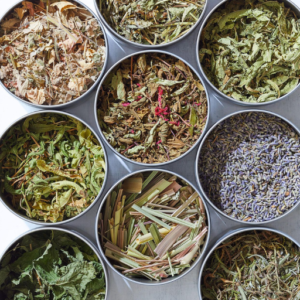
Using a microwave to dry herbs quickly works efficiently as long as you start by rinsing them under cold water before patting them with paper towels, getting rid of any dirt found within, then removing thick stems afterwards laying all pieces evenly between two layers of the said towel, placed above each other sitting atop safe plate suitable for microwaving followed by cooking on low temperature starting from twenty up-to thirty-second intervals checking often enough so they don’t burn ready when feeling crumbly & dry let cool down afterward storing away airtight container located somewhere dark & cool prolong shelf life while maximizing taste within it.
Step-by-Step Guide: Dry Herbs in a Microwave
- Pick Your Spices: To dry your spices, select fresh, blemish-free herbs. Options include basil, oregano, and parsley.
- How to Prepare: The next step is rinsing the herbs with cold water to eliminate dirt. After washing them, use a paper towel to pat the leaves dry. Remove thick stems, but focus on the leaves.
- What Layering Means: Spread out the herb between two layers of paper towels in one layer for uniform drying.
- Microwaving Instructions: For best results, use a microwave oven set at low power and heat for 20-30 seconds, turning every time until fully dried, crispy, crunchy pieces are achieved without burning.
- Storing Your Items After Cooling Down Period: Afterwards, wait until they cool down, then pour into an airtight container. The container should be kept away from light and heat sources so that it maintains potency and freshness over time.
Follow these steps to dry herbs quickly in a microwave while ensuring that they keep their smell for cooking.
Essential Tools: Paper Towel, Single Layer Technique
- Paper Towels Drying Process: These are crucial when absorbing moisture from microwaved spices because too much steam will make them soggy instead of crispy crunchy deliciousness! Always use clean, dry ones, though; otherwise, you may get bacteria growing next time around!
- Microwave Safe Plate Usefulness: A plate safe for use in microwaves can act as a stable base during drying by holding everything together, thus providing an even distribution of heat.
- Why Single Layer Technique Is Important While Drying Herbs: An efficient drying technique must allow airflow and equal exposure to evenly heated microwaved leaves, thus preventing fire accidents caused by burnt offerings.
By gathering these essential tools and following the outlined steps, you can effectively dry your spices in the microwave, enhancing flavor and shelf life!
Optimal Settings: Microwave on High or Full Power
The microwave is the best option for drying herbs. A high setting will quickly dry out the herbs, but be careful not to overheat them by checking regularly, starting with 20-second intervals and rotating as needed. This method ensures that quick evaporation occurs without losing color or flavor. Browning means you should use a lower power setting next time, so pay close attention while drying.
How to Ensure Your Herbs Are Completely Dry?
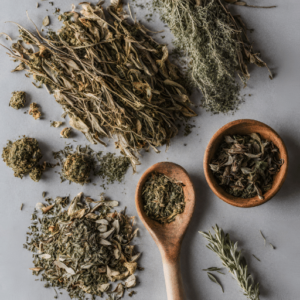
To test if they are done, look for a crumbly texture in which the leaves snap easily when bent. After microwaving, let the leaves cool down before checking because they might still hold water inside them. If this happens and the leaf feels soft instead of brittle, put it back in for another 10-15 seconds until fully dried again, being cautious not to burn it. You can also try using a food dehydrator or oven at low temperatures if preferred, but remember that complete evaporation is important to stop mold growth during storage later on after placing into airtight containers shielded from light exposure and humidity influxes, which degrade quality faster over time through chemical reactions with volatile compounds present within essential oils contained inside plant material itself like rosemary thyme sage oregano basil.
Signs to Look For: Crumble Test
The crumble test is a simple and practical way to check if your herbs are fully dried. To do this test:
- Gently Rub: Take some leaves of dried herbs and rub them between your fingers.
- Evaluate Texture: If the leaves easily break apart and crumble into small pieces, they are dry enough. But if they bend or stay soft without breaking, you should dry them more because there may still be moisture in the herbs.
- Check for Residual Dampness: Touching the crumbled pieces will help confirm that everything has been dried completely. They should feel dry and brittle, with no damp spots.
This easy yet efficient testing method assures us that our herbs can be stored well for potency and flavor retention.
Using Visual and Tactile Cues: Fresh Herbs in the Microwave
When using a microwave to dry fresh herbs, visual appearance, and touch must be monitored for best results. Start by laying out the herb leaves on a safe plate in one layer without overlapping any parts of them. Use low power settings when microwaving these ingredients in short bursts lasting 20-30 seconds each time before checking again visually after every round; look for less vibrant colors and slight shrinkage over time.
Use fingers, too, though! Gently squeeze some leaves; if they crumble easily without leaving any moisture behind, then congratulations: You’ve done it right! But if they’re still flexible or seem wet, keep zapping me until dryness is achieved (don’t forget about those intervals!). Wait a moment before handling further since cooling will help keep texture intact without trapping additional water, which could ruin flavor later when used again.
Avoiding Over-Drying and Burning
Do you want to dry herbs in the microwave? Well, there’s a right and wrong way to do this. Keep that power low, or you might as well just burn them! Instead of blasting your herbs on high for 5 minutes, which is too long, starting at around 20 seconds in lower settings and gradually increasing the time with each interval. Watch closely after every cycle because if they become brittle, change color, or smell burnt – those are clear signs of over-drying! You don’t want your delicious snacks turning into ashes, right? Oh, another tip: always lay out the herbs in one flat layer so they dry evenly; putting down some paper towels can also help soak up extra moisture before things get heated more than necessary.
How to Store Dried Herbs Properly?
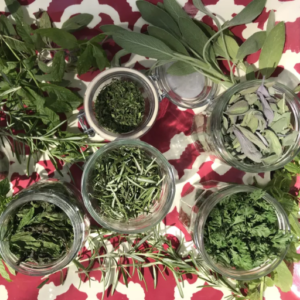
When it comes to drying and storing dried herbs, let’s talk about how important it is to properly store them once they’ve been completely cooled down after being microwaved. Air exposure will only degrade their quality over time – so use an airtight container like glass jars or vacuum-sealed bags instead! Then, keep these bad boys away from sunlight, heat, and moisture while keeping everything nice and cool/dry-dark because that preserves flavor best. Label containers with names & dates used during drying processes: freshness tracking made easy peasy lemon squeezy! If done right, dried herbs stay aromatic for up to a year, but don’t worry—their flavors are still top-notch even when cooking dishes two months later!
Best Practices: Keeping Herbs Cool and Dry
It’s important to keep herbs cool and dry by storing them in a climate-controlled environment.
- Optimal Temperature: Herbs should be kept below 70°F to slow deterioration. High temperatures can cause loss of flavor and aroma.
- Use the Right Containers: Since light deteriorates quality over time, choose dark glass jars or containers blocking light exposure. Airtight packaging also helps keep moisture levels low.
- Humidity Control: Make sure storage is low on humidity content within it; this can be done by using silica gel packets inside containers where these items are stored so they absorb excess water vapor, which keeps everything dry, thus preventing mold growths from occurring due to high, levels of relative humidity (RH).
Adhering strictly to optimal storage practices can significantly increase the shelf life and quality of your dried herbs.
Ideal Containers: Jar Storage Tips
Jars have been proven to be a great way to store dried herbs and maintain their quality.
- The material for the Jars should be chosen wisely: Glass jars are recommended because they don’t react with the herbs or add flavors. Therefore, it is advisable to go for dark and opaque containers, which can cut off light that may spoil the herbs over time.
- Seal Tightly: Make sure your jars have an airtight seal to prevent moisture from entering, which could damage the contents. Rubber gaskets and screw-top lids best keep things sealed tightly while preventing exposure to air.
-
Storage Location: Store food items in cool places away from bright lights, like pantries or cupboards, where temperatures remain constant since these areas have less exposure than others. This is especially true near stoves or windowsills, where extreme changes happen frequently due to nearby cooking activities.
These guidelines will help you store your dried herbs in a jar to last longer and taste better when used for cooking.
Extending Shelf Life of Microwave Dried Herbs
To extend the shelf life of microwave-dried herbs, here are some key practices:
- Cool Before Storing: After microwaving, let the herb cool down completely before sealing it inside a container/jar – this minimizes condensation, which could lead to mold growth; otherwise
- Store in Airtight Containers: Just like other kinds of dried spice, using airtight containers matters most. Glass with secure lids works best due to preventing exposure to moisture and air quality deterioration
- Keep Dark Environment: Store them somewhere cool/dark since prolonged light exposure diminishes flavor potency over time. Usually, pantries/cupboards are ideal.
- Use Vacuum Sealing: For long-term storage, remove air packaging and consider vacuum-sealed dried herbs, significantly improving lifetime retention taste.
Following these strategies means more flavorful, aromatic additions and culinary adventures, and always cooking together.
Frequently Asked Questions (FAQs)
Q: What is the best way to dry herbs in the microwave?
A: The best way to dry herbs in the microwave is to first wash them thoroughly, then pat them dry with paper towels. Spread the herbs, such as parsley or oregano, on a microwave-safe plate, cover them with another paper towel, and microwave on high for short intervals, checking often until the herbs are dry.
Q: How should I clean herbs before microwaving them?
A: To clean herbs before microwaving, wash them under running water to remove dirt or residue. Pat them dry thoroughly with paper towels to remove excess moisture before placing them in the microwave.
Q: Can you dry chive and tarragon in the microwave the same way as other herbs?
A: You can dry chive and tarragon in the microwave using the same method as other herbs. Ensure they are washed and dried correctly, and microwave in short intervals until fully dried.
Q: What should I use to cover the herbs in the microwave?
A: When drying the herbs in the microwave, cover them with a paper towel. This helps absorb moisture and prevent the herbs from blowing inside the microwave.
Q: How do I know when the herbs are dry?
A: The herbs are dry when they become brittle and crumble easily between your fingers. Check them at regular intervals while microwaving to avoid over-drying or burning.
Q: Is it necessary to use a microwave-safe plate?
A: Yes, it is necessary to use a microwave-safe plate to ensure that the plate can withstand the microwave’s heat without breaking or releasing harmful chemicals.
Q: How should I store herbs after drying them in the microwave?
A: After drying, store herbs in an airtight container in a cool, dark place. This helps to preserve their flavor and extend their shelf life.
Q: Can I dry a large batch of herbs in the microwave?
A: It is better to dry a few herbs at a time to ensure even drying. Drying a large batch in one go can lead to uneven results.
Q: Is microwaving herbs an efficient way to preserve them?
A: Yes, microwaving herbs is a quick and efficient way to preserve them, especially if you have leftover fresh herbs you don’t want to waste.
Q: Will microwaving herbs affect their flavor?
A: Microwaving herbs can affect their flavor slightly, but drying them is a fast and convenient way. Herbs like oregano and parsley retain much of their flavor when dried this way if done correctly.













